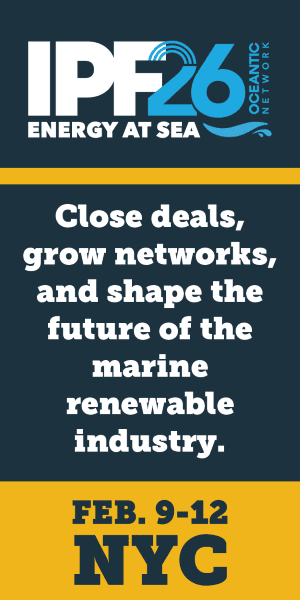Improved geothermal energy stands out as an underappreciated investment opportunity in the renewable energy sector. The Massachusetts Institute of Technology’s research shows this technology could meet twice the world’s total energy demand.
Geothermal systems (EGS) currently provide just 1% of global electricity, but they’re ready for rapid expansion. The International Energy Agency projects geothermal growth will attract $1 trillion in investments by 2035. Fervo Energy has already demonstrated EGS geothermal’s commercial viability in Nevada and plans to deliver clean power consistently by 2026.
Our close monitoring of EGS developments reveals its potential as a game-changing energy solution. This technology could meet 15% of global electricity demand growth by 2050. It’s remarkably efficient land use makes it stand out among renewable technologies, which makes it worth adding to your investment portfolio.
This piece will help you understand what sets EGS apart from traditional geothermal energy. We’ll get into groundbreaking projects that prove their viability, analyze why 2025 might be ideal for investment, and evaluate the potential risks you should know before investing your capital.
What Makes Enhanced Geothermal Systems Different
Traditional geothermal power has always depended on geography. EGS (enhanced geothermal systems) can tap into the full potential of vast energy by creating engineered reservoirs almost anywhere heat exists underground, unlike conventional systems.
How EGS geothermal works
EGS creates artificial underground reservoirs where nature didn’t make any. The system starts by drilling deep wells into hot rock formations. Water gets injected under carefully controlled conditions to create new fractures or reopen existing ones. This makes the rock more permeable, and fluid can circulate through the hot rock to absorb heat.
The process works in a simple cycle. Cold water goes down an injection well and heats up as it moves through the engineered fracture network. Hot water comes back to the surface through production wells. Steam turbines or binary power systems use this hot water to generate electricity before it goes back underground.
Why traditional geothermal is limited
You need three things in the same spot for conventional geothermal: natural heat, fluid, and permeable rock. This rare combination has kept traditional development to specific regions like Iceland, Kenya, and the western United States.
Most geothermal energy sits in dry, impermeable rock that we can’t reach with conventional techniques. The US has 3.8 gigawatts of installed geothermal capacity. Yet an estimated 30 GW of undiscovered hydrothermal resources and over 100 GW of potential EGS energy remain unused.
The role of hydraulic fracturing in EGS
Hydraulic fracturing is the lifeblood of EGS development. The technique is different from oil and gas applications. Both use high-pressure fluid injection, but geothermal “hydro-shearing” mostly expands existing fractures instead of making new ones.
The process has several vital elements:
- Stimulation methods: Hydraulic, chemical, and thermal techniques improve permeability in otherwise unreachable hot rock formations.
- Controlled pressure: Water injection raises fluid pressure in the rock and triggers shear events that expand pre-existing cracks.
- Fracture network: Success relies on creating complex, interconnected fracture networks in hard, low-permeability reservoirs.
So, EGS technology changes geothermal from a niche, location-specific resource into a potential energy source everywhere. Temperatures rise predictably with depth, and advanced drilling techniques can now reach depths up to 15km. This means EGS plants could work almost anywhere on Earth.
Breakthrough Projects That Prove It Works
Groundbreaking projects now show that improved geothermal systems (EGS) have moved beyond theoretical potential into commercial reality. These breakthrough initiatives prove that the technology can deliver reliable, carbon-free power at competitive costs.
Fervo Energy’s Nevada and Utah projects
Fervo Energy has emerged as a frontrunner in EGS development since 2021. The company achieved remarkable results during its Project Red’s 30-day well test in northern Nevada. It produced a flow rate of 63 liters per second at high temperature and enabled 3.5 MW of electric production. These numbers set new records for both flow and power output from an improved geothermal system.
Fervo’s Cape Station project in southwest Utah stands even more ambitious. This 400 MW development started construction in September 2023. Carbon-free electricity will flow to the grid in 2026, reaching full-scale production by 2028. The project hit a maximum flow rate of 107 kg/s at high temperature, which enables over 10 MW of electric production, triple Project Red’s per-production well output.
Eavor’s closed-loop system in New Mexico
Eavor Technologies advances a different approach with its closed-loop geothermal system. The company successfully completed its next-generation demonstration project called Eavor-Deep™ in New Mexico between August and December 2022.
The project drilled a two-leg multilateral well down to 18,000 feet with temperatures reaching approximately 250°C. Eavor achieved its technical objectives by isolating upper fractured permeable zones with casing and proving insulated drill pipe performance. This success led bp Ventures to invest an additional USD 10 million CAD.
Google and Fervo’s corporate partnership
Strategic collaborations speed up EGS adoption across industries. Google and Fervo Energy signed the world’s first corporate agreement to develop a next-generation geothermal power project in 2021. They aimed to power Google’s Cloud region in Las Vegas with an “always-on,” carbon-free resource.
Their partnership has delivered results—the 3.5 MW geothermal power project in Nevada now operates and supplies carbon-free electricity to the local grid serving Google’s data centers. Both companies expand their work through a 115 MW project called the Corsac Station Enhanced Geothermal Project.
Why EGS Could Be a Smart Investment in 2025
The economic case for enhanced geothermal systems (EGS) has never looked better. Several key advantages make this technology a compelling investment as we approach 2025.
Stable, dispatchable energy source
Enhanced geothermal sets itself apart from other renewables by generating reliable power 24/7. These plants operate at a remarkable 90% or higher capacity factor and deliver steady electricity that doesn’t depend on weather or time of day. This reliability makes EGS a valuable addition to wind and solar power.
The system’s flexibility is another advantage. EGS can adjust its production based on electricity needs, which helps stabilize the power grid. This quick response capability lets geothermal serve both as baseload power and on-demand generation, making it easier to balance other renewable sources.
Low land use and high scalability
Enhanced geothermal stands out among renewables for its space efficiency. The technology needs just 7.5 square kilometers per terawatt-hour of production, which is five times less than solar PV and ten times less than wind power. This small footprint makes it perfect for areas near cities or where land is scarce.
The scalability numbers are impressive. The US has the technical potential for about 5,000 GW of geothermal power, enough to power 65 million American homes and businesses. On a global scale, next-generation geothermal could meet electricity needs 140 times over.
Growing demand from data centers and AI
The technology sector’s interest makes this investment even more attractive. AI and data centers need massive amounts of electricity, and geothermal power fits perfectly with its clean, reliable nature and compact footprint.
Studies show that on-site geothermal could provide 55-64% of projected growth in hyperscale data center capacity, adding 15-17 GW of new capacity. All but one of the 15 largest data center markets could meet their expected growth through geothermal power.
Big tech companies are taking notice. Meta signed agreements for 150 MW of geothermal power, while Google works with Fervo Energy on active projects. Data centers are ready to pay premium rates for reliable, carbon-free electricity, making EGS a smart investment choice for 2025.
Risks, Costs, and What to Watch For
Investing in geothermal energy comes with several important challenges that need careful thought. The technology looks promising, but investors should know about specific risks before they put in their money.
Seismic concerns and public perception
Induced seismicity remains the biggest hurdle for EGS development. The public’s view has been altered by several notable incidents. The 2006 Basel project in Switzerland had to shut down after it triggered earthquakes of magnitude 3.4. The 2017 Pohang incident in South Korea caused a 5.5 magnitude earthquake that led to $75 million in damages. These events show that EGS operations might trigger more than just minor tremors.
The public’s acceptance depends on how they notice the risks. Studies show that people worry about seismic activity based on how fairly projects are run and their trust in management. Many communities link EGS with hydraulic fracturing (“fracking”) and worry about underground disturbances.
High upfront capital costs
The financial barriers are substantial. Near-hydrothermal field EGS costs between $7,770/kW and $22,501/kW on average, while deep EGS (3-6 km) needs $20,848/kW to $49,155/kW. Drilling costs alone make up more than half of what projects cost.
EGS power plants need $5,000-$6,000/kW with today’s technology, even with well-engineered reservoirs. Major breakthroughs could bring this down to $3,000/kW. Yet, cost-optimized systems would still limit widespread deployment to about 100 GW.
Regulatory and permitting delays
The regulatory world creates tough obstacles. Oil and gas projects get special treatment under NEPA, but geothermal projects might need six different environmental reviews. Projects on public land take 7-10 years on average, which really affects their economic success.
Permits create an especially tough situation because about 90% of America’s geothermal potential with current technology sits on public lands. These long waiting periods make financing harder and increase costs.
Conclusion
Enhanced geothermal systems are emerging as a game-changing frontier in renewable energy investment as we near 2025. Our analysis shows that EGS technology can meet global energy needs twice over with minimal environmental impact. Companies like Fervo Energy and Eavor Technologies have moved past theory and proved that commercial-scale projects deliver reliable, carbon-free power consistently.
EGS technology is ready to reshape the scene of energy production despite its current limits. Traditional geothermal always had location restrictions, but enhanced systems remove these barriers. Engineers can now create reservoirs almost anywhere with enough underground heat. This breakthrough changes how we see geothermal’s reach completely.
The most important advantage of EGS investments lies in their stability. Geothermal plants run at 90% capacity and deliver steady power, regardless of the weather conditions. The grid needs this reliability as it adds more variable sources like wind and solar.
The growing energy needs of data centers and AI applications create ideal market conditions for EGS growth. Major tech companies have started to lock in geothermal power agreements. They see the value of clean, constant energy that needs minimal land.
Investors must think carefully about several challenges. Seismic problems are systemic – the whole ordeal in Switzerland and South Korea shows real-life risks. Money is another obstacle. High upfront costs of $5,000-$6,000/kW need substantial original investment. Rules and regulations make development complex, especially since most potential sites sit on public lands.
Enhanced geothermal energy deserves serious attention from forward-thinking investors. The technology combines steady reliability of traditional power sources with renewables’ clean profile. These features will become more valuable as our energy transition picks up speed. EGS is a chance to join what could become one of the next decade’s most important energy developments. The groundwork for wide adoption happens now, making 2025 potentially the perfect time to explore this promising investment frontier.

![Why Enhanced Geothermal Energy Could Be Your Next Smart Investment [2025 Guide] 1 Why Enhanced Geothermal Energy Could Be Your Next Smart Investment [2025 Guide]](https://b1006343.smushcdn.com/1006343/wp-content/uploads/2025/06/Why-Enhanced-Geothermal-Energy-Could-Be-Your-Next-Smart-Investment-2025-Guide.jpg?lossy=2&strip=1&webp=1)



